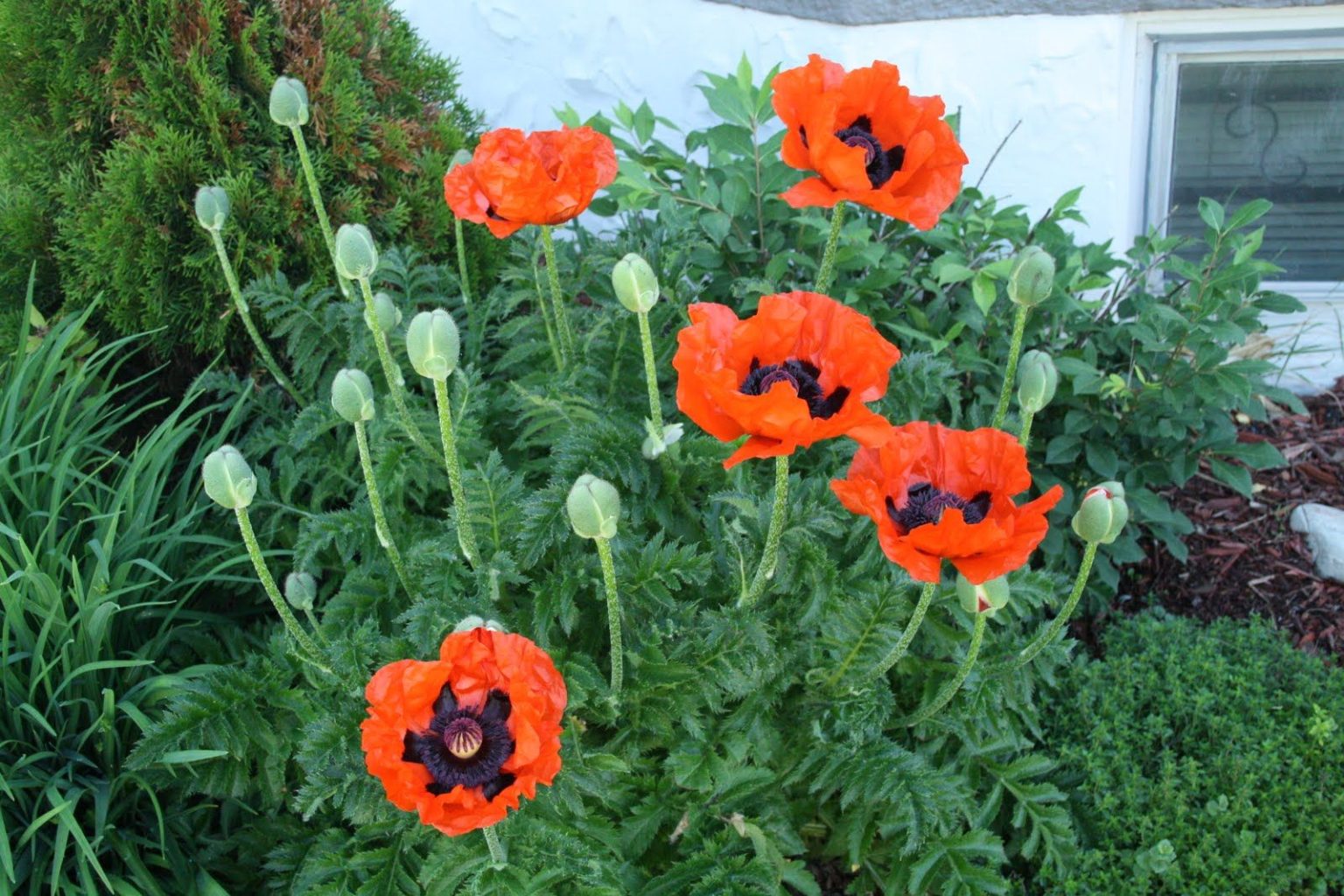A distinctive group of flowers with thin, flaccid flowers, Our poppies are a popular bunch. With most species flowering come early-summer, I thought now seemed like a good time to cover this attactive group. Remember, this post covers those most likely to be encountered in Northumberland and the wider North East. It isn’t exhaustive.
What Does a Poppy Leaf Look Like? A Visual Guide to Poppy Leaves
Poppies are flowering plants known for their colorful, delicate petals and rich history of cultural symbolism. But what about their leaves – what do poppy leaves look like? In this article, we’ll explore the physical characteristics of poppy leaves and how to identify them.
Physical Description
Poppies have lobed or dissected leaves and milky sap. The leaves tend to be alternate on the stem and can be simple or pinnately divided. Their shapes range from oblong to round with toothed, lobed or frilled edges. Poppy leaves come in many colors like blue-green, grey-green, sea green, or silver-green. Some have a whitish bloom covering the leaves. In terms of texture, the leaves may be smooth, downy, or hairy.
When new leaves emerge, they can appear crinkled before expanding and flattening out. Mature poppy leaves vary in size, from just an inch or two long to almost a foot long. They grow along the upright, hairy, and branching stems of the poppy plant. The buds are often nodding and are borne on solitary stalks.
The flowers have four to six petals with numerous stamens surrounding the ovary. The petals can be red, orange, pink, white, purple or variegated. Once the petals fall away, a fruit capsule forms containing numerous small seeds. After the seeds ripen and are dispersed, the leaves die away until the next growing season.
Specific Types of Poppy Leaves
There are over 200 species of poppies, which accounts for the wide variation in leaf appearance between different types. Here are some details on the leaves of popular poppy species:
-
Corn poppy – Long, narrow, lobed leaves with toothed edges. Blue-green in color.
-
Oriental poppy – Leaves are pinnately divided with hairy lobes. Gray-green.
-
California poppy – Finely divided fern-like leaves. Blue-green color.
-
Iceland poppy – Leaves are pinnately lobed and dentate with crinkled edges. Color ranges from gray-green to blue-green.
-
Opium poppy – Oblong, lobed leaves with toothed margins. Glaucous blue-green.
-
Welsh poppy – Leaves are oblong, toothed, and softly hairy. Sea green color.
-
Wood poppy – Round, palmate leaves with five to nine lobes. Light green with whitish underside.
How to Identify Poppy Leaves
Here are some tips for identifying poppy leaves:
-
Alternate leaf arrangement – Leaves emerge singly and alternate along the stem
-
Milk-like sap – Poppy leaves and stems ooze white latex when damaged
-
Lobed or divided shape – Leaves have indented or separated lobes and segments
-
Flower buds – Nodding, round flower buds will be present in spring and summer
-
Hairy stems – Poppy stems are hairy or bristly
-
Crinkled new growth – New leaves often emerge wrinkled before expanding
-
Color – Ranges from blue-green to silver gray-green depending on variety
By getting familiar with the unique physical attributes of poppy leaves, you’ll be able to easily spot them! Recognizing the foliage can help identify poppies even when they are not in bloom. Whether you come across them in the wild, in your garden, or in a floral arrangement, knowing what poppy leaves look like makes it simple to differentiate poppies from other flowering plants.

Welsh Poppy Papaver cambricum
County Status: Common
Habitat: Gardens and urban habitats close to habitation. Favours shady situations. Occasionally spreading to roadsides, stream banks etc.
Identification: Flowering May-July. A medium-tall slightly hairy plant with deeply divided foliage. Flowers usually yellow but orange-flowered forms may occur.. Capsule elliptical with a short style at the tip. Ed Stikvoort, via Saxifraga Jelle van Dijk, via Saxifraga Jan van der Straaten, via Saxifraga
Opium Poppy Papaver somniferum
County Status: Common
Habitat: Dry and disturbed habitats in urban environments. Roadsides, rough ground and often, coastal habitats.
Identification: Flowering May-September. Flowers are incredibly variable and can be pink, lilac, red or white. Pale lilac in the typical form.Seed capsule spherical. Best separated by its glaucous, waxy leaves. Peter Meininger, via Saxifraga Ab H Baas, via Saxifraga Ed Stikvoort, via Saxifraga
Growing Poppy Plant from Seeds
FAQ
How do you identify poppy leaves?
Leaves greyish green, oblong, but lobed and undulate, the upper clasping the stem. Flowers large, 8 to 18 cm purple, pale lilac or red, often with a deep blotch at the base of each petal, anthers pale yellow. Capsule rounded.
Why is it illegal to grow poppies?
The US does prohibit the cultivation of the common breed of poppy which does produce a significant amount of opium under the Opium Poppy Control Act of 1942. The way the law is worded also prohibits the cultivation of any breed of poppy which can be used for the production of opium.
What do the leaves on a poppy flower look like?
Flowers have four to six petals, many stamens forming a conspicuous whorl in the center of the flower and an ovary of two to many fused carpels. The leaves almost look like weeds when first emerging from the soil. They are lobed or dissected, appearing lacy, frilly or fern-like.
Which way should a poppy leaf face?
We often hear people debating the ‘correct’ way to wear a poppy, but the truth is, unless you’re currently serving, there is no ‘correct’ way. It’s a matter of personal choice whether someone chooses to wear a poppy and how they choose to wear it.
